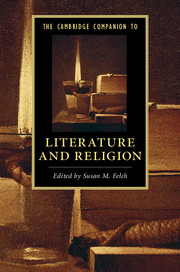2 - Confessional Reading
from PART I - READING PRACTICES
Published online by Cambridge University Press: 05 September 2016
Summary
In his preface to The Picture of Dorian Gray (1891), Oscar Wilde offers the reader a manifesto for modern aestheticism, a philosophy of beauty that is essentially a concern for form – for beauty and the manifestations of beauty in themselves. According to Wilde, the integrity of form and therefore the integrity of a work of art can be secured only by excluding the concerns of philosophy and ethics, of truth and goodness, which always threaten to harness what is beautiful for the service of something extrinsic and secondary to it. “Form is absolutely essential,” we are later told (209), but as importantly: nothing else is. “Beautiful things mean only beauty,” says Wilde, and therefore there “is no such thing as a moral or an immoral book. Books are well written, or badly written. That is all” (1). “All art is quite useless” precisely because aesthetic form, the dimensions of the beautiful thing, is the final and highest reality: there is nothing more ultimate than beauty and so nothing outside itself that it should serve, and this form resides in “surface and symbol” (2).
Wilde's manifesto for modern aestheticism is a confession, and in The Picture of Dorian Gray Wilde offers two confessional readings of the protagonist by Lord Henry Wotton and Basil Hallward that begin in the presumption that artistic form can be protected only by way of exclusion. In the novel, we witness two versions of aestheticism coordinated by beauty's respective conditions of surface and symbol and represented by the noble lord and the diligent painter, both of whom vie for the soul of that innocent, “unspotted” beauty, Dorian Gray. How they initially understand what it means to have a concern for form, and where Wilde has it lead them, provides a cautionary tale regarding the whole enterprise of literary study and indeed of any aesthetic activity defined by its concern for form and understood as a “secular,” that is to say, as a separated and self-grounding mode of inquiry premised on an act of exclusion.
- Type
- Chapter
- Information
- The Cambridge Companion to Literature and Religion , pp. 35 - 50Publisher: Cambridge University PressPrint publication year: 2016

